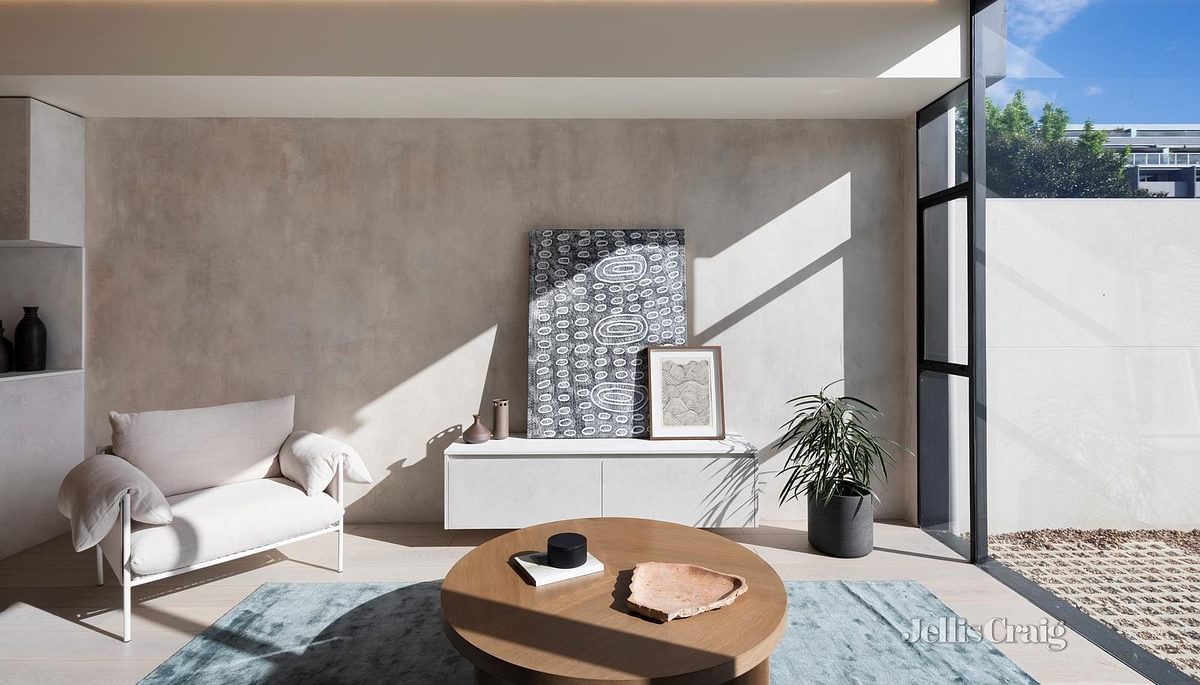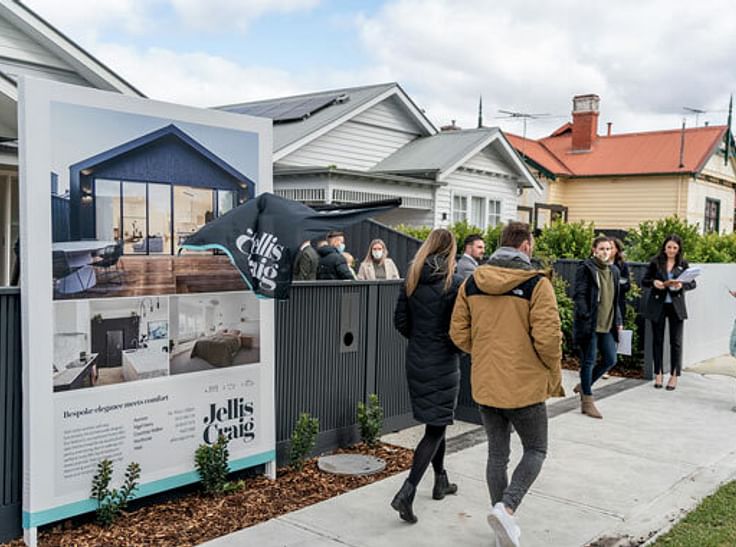Residential Tenancies Act Amendments 2021


Introduction
The Victorian Government has legislated a substantial number of changes to the Residential Tenancies Act which are due to commence on the 29th March 2021. As a landlord it is important that you are aware of what this means for you and what your responsibilities are moving forward to ensure compliancy with the Act.
These changes have been made to ensure the safety of the tenant in a property, and to ensure that all rights and responsibilities of tenants and landlords are abided by. These changes affect the entire lifecycle of the rental agreement (from the application, to until after the agreement has ended). There are 132 reforms to the Act, and we have summarised the key points for you in this document.
Terminology Changes
There are new terms used throughout the amended Residential Tenancies Act.
- renters – currently called tenants
- rental providers – currently called landlords
- rental agreements – currently called tenancy agreements
- rooming house operators – currently called rooming house owners.
BEFORE THE PROPERTY IS LEASED
Safety and minimum requirements
The rental property must be kept in good repair and reasonably fit for occupation. Rental providers must ensure that the property is in a suitable condition for occupation regardless of the amount of rent paid, or the property’s age / character.
Rental providers must ensure that the rented property meets the rental minimum standards (see page 179 of the regulations, here). Should the rental provider be non-compliant in these standards, the renter can terminate the rental agreement before they move in, or alternatively can request an urgent repair to the property.
Find below a summary of minimum standards rental premises must adhere to:
- Locks: all external entry doors to the property that are not able to be secured with a functioning deadlock, other than any screen door attached to an external door must be fitted with a locking device that is operated by a key from the outside and may be unlocked from the inside or without a key.
- Vermin proof bins: a rubbish bin and recycling bin are to be supplied to the renter, provided by the council or otherwise.
- Toilets: all rented premises must contain a toilet that is in good working order.
- Bathroom facilities: a bathroom must contain a washbasin, a shower or bath and must be connected to a reasonable supply of hot and cold water with certain water star ratings to apply depending on the plumbing at the property.
- Kitchen facilities: rented properties must have a dedicated area for cooking and food preparation. The area must have a sink that is in good working order and is connected to a reasonable supply of hot and cold water, and a cooktop that is in good working order with two or more burners. If there is an oven at the property, it must be in good working order.
- Laundry: if laundry facilities are present, they must be connected to a reasonable supply of hot and cold water.
- Structural soundness: the property must be structurally sound and weatherproof.
- Mould and dampness: each room in the property must be free from mould and damp caused by or related to the building structure.
- Electrical safety: all power outlets and lighting circuits are to be connected to a required switchboard depending on the property requirements (from 29/3/2023, see page 182 of the regulations, here).
- Window Coverings: each window in a room that is likely to be used as a bedroom or as a living area must be fitted with a curtain/blind that can be opened and closed, can block light, and can provide privacy (from 29/3/2022).
- Windows: all external windows that are capable of opening, must be able to be set in an open or closed position and have a functioning latch protecting against external entry.
- Lighting: interior rooms, corridors and hallways must have access to light (whether natural or artificial) that provides a level of illuminance appropriate to the use of the room. Each room needs to have access to natural light (including borrowed light from an adjoining room) during daylight hours, and artificial light during non-daylight hours.
- Ventilation: each room of bathroom, shower room, toilet and laundry must meet certain ventilation requirements (see page 184 of the regulations, here).
- Heating: a heater is required in at least the main living area of the rented property. There are certain classifications depending on what Class of building the property is. (See page 184 of the regulations, here).
Renting the property
Rental providers and estate agents can only advertise/offer rental properties at a fixed price. As such, no “range”, “plus” or “offers above” pricing statements will be allowed. Subsequently, there is a ban on inviting rental bids, or soliciting offers of rent that are higher than the advertised price. That means that where one applicant has offered more than another, agents are not permitted to approach the lower offer and encourage them to offer a higher rent.
The rental provider and agent are banned from encouraging a potential renter into a rental agreement through misleading or false representations/or deceptive conduct. This has a number of implications, most notably the imagery of the property on advertisements needs to be reflective of the actual property. Examples of other areas in which the rental provider or their agent must not mislead or deceive potential renters are:
- the rental provider's interest in the property (are they a long-term investor or an occupier going interstate / overseas for a fixed term)
- the rent payable (flat rate, no rental range and disclosing any additional fees for gym access, etc)
- the location of the premises (how far from public transport, schools, etc)
- the characteristics, facilities or features of the premises (overstating the condition, or promoting a facility that it not available such as being connected to the NBN)
- the use to which the premises are capable of being put or may lawfully be put (is it zoned residential)
Before the renter enters into the rental agreement, the rental provider must also disclose to the renter whether the property is on the market for sale, or there is an ongoing proposal to sell.
The maximum amount that can be taken for a bond has been updated. Properties with a rental value of $900 per week or less are only able to take one months bond, or two weeks rent as bond where the rent is paid weekly or fortnightly. For properties with a rental value over $900 per week, the rental provider can require the renter to pay a higher bond.
All rental agreements must have an information statement that informs and educates applicants and rental providers on unlawful discrimination and provides a conduct that must be abided by when approving a renter. This includes determining consent for disability related modifications. The document is prescribed in Form 4 of the regulations (See page 89 here).
When a renter has entered into a rental agreement, the rental provider must provide each individual renter named on the rental agreement with a free set of keys/security device. It is only after this has occurred, and replacement/additional keys/security devices are required that a rental provider may charge a (reasonable) fee.
Pets in rental properties can be kept with the written consent of the rental provider. The rental provider may apply to VCAT for an order that is reasonable to refuse permission to allow an animal to be homed at the rental property. However, it is important to note that the grounds to refuse permission are restrictive and there are few situations where a rental provider is able to refuse such permission.
Safety in the rented premises
There are now safety checks that rental providers must comply with – this includes having a regular service of smoke alarms, gas appliances and electricity checks by a professional and ensuring that the records are kept. Should your property need a required service, please speak with your property manager. Listed below are further details on safety requirements in the rented premises:
- Electrical safety: the rental provider must ensure that an electrical safety check of all electric installations, appliances and fittings is conducted every 2 years using a registered electrician. These checks must be recorded and provided to the renter upon request.
- Gas safety: If the property contains any gas appliances, fixtures, or fittings there must be a gas safety check conducted every 2 years. These checks must be recorded and provided to the renter upon request.
- Smoke alarms: every smoke alarm in a rented premise must be correctly installed, be in working condition, and be tested at least once every 12 months. The rental provider must ensure batteries are replaced as required and the renter is provided with the information about how to use and test these alarms. The renter is not to tamper with smoke alarms and must report any breakdowns to the rental provider.
- Swimming pools: the rental provider must ensure that the swimming pool barrier is in good condition, and if not, must be replaced or repaired.
- Bushfire-prone areas: if the property is in a designated bushfire prone area, a water tank is required for firefighting purposes, and the tank and any connected infrastructure must be maintained.
THROUGHOUT THE LEASE PERIOD
Late payment and rent increases
Previously, where a renter was given a 14-day notice to vacate for rent arrears over 14 days, payment of the rent arrears did not affect the validity of the notice. Under the new rules, if the renter pays overdue rent prior to a Tribunal hearing, any notice to vacate by the rental provider (if the reason is overdue rent) is invalidated. This applies to the first four times of the renter paying their rent late in a 12-month period. If, however, the renter fails to pay their rent as required on the 5th occasion in the same 12-month period, then the rental provider may give a notice to vacate and can apply to VCAT for a possession order. On this 5th instance, the Tribunal is not allowed to put the renter on a payment plan and must, unless there are extreme circumstances, provide an Order of Possession so the renter can be evicted.
Should the rental provider wish to increase the rent for the property, this can be done no more than once in a 12-month period. For increases that are to commence during a fixed term rental agreement, they can only occur if the rental agreement specifies the amount/calculation of the rent increase in said agreement.
Where a rental provider would like to increase the rent of a periodic tenancy, the amount and calculation method for the increase must be set out in the agreement and this amount and calculation method must be used. For instance, the notice of rent increase must state if the rent is being increased by CPI or market value. If market value, evidence must be supplied by way of comparable properties.
Utility fees, charges, and responsibilities
Rental providers must pay for all charges that renters are not liable for. This includes:
- Water charges for the rented premises that are not separately metered
- Rates and outgoings
- Excessive utility bills that are attributed to a hidden fault (such as leaking water pipes, etc). In this case, the rental provider must pay for the cost that exceeded the renter’s ordinary usage amounts.
- Initial connection costs of telephone and internet (including NBN) connections.
Rights of entry
Minimum of 7 days’ notice now required for property inspections, including routines and valuations. Renters are entitled to compensation for sales inspections, which can be held twice a week, being 50% of the daily rent or $30, whichever is the greater for each inspection.
Urgent Repairs
Should a renter be required to pay for urgent repairs in the event the rental provider has not promptly responded to the urgent request, there is now an increased limit of up to $2,500 (previously $1,800) for these repairs. This amount cannot be reduced by agreement. Any payment by the renter on urgent repairs must be paid back by the rental provider within 7 days of the renter giving written notice and evidence of the cost.
Urgent repairs now include:
- Any appliance, fixtures or fittings (other than a dishwasher) that uses or supplies water
- Air conditioning
- Safety devices
- Faults or damages that makes the property unsafe / insecure.
- Pest infestations
- Mould/damp
If a rental provider has not responded to a non-urgent repair request, the renter can apply directly to VCAT if these repairs have not been carried out within 14 days.
Modifications
Renters are now able to make certain modifications to the home (at their own expense) without the consent of the rental provider, in rented premises that is not a registered place (Registered Place being premises on the Heritage Register). Modifications include:
- Installation of picture hooks or screws for wall mounts, shelves or brackets on surfaces other than exposed brick or concrete walls.
- Installation of wall anchoring devices to secure furniture on surfaces other than exposed brick or concrete walls.
- Installation of LED light globes (that do not require new light fittings).
- Installation of a water efficient shower head (ensuring the original is retained).
- Installation of blind cords/anchors.
- Installation of security lights/cameras that do not impeach on the privacy of neighbours, are not hardwired to the property, and can be easily removed.
- Installation of hardware mounted child safety gates on surfaces other than exposed brick or concrete walls.
- Installation of non-permanent window film for reduced heat transfer or privacy.
- Installation of a wireless doorbell.
- Replacement of the curtains (ensuring the originals are retained).
- Installation of adhesive child safety locks on draws and doors.
- Installation of pressure mounted child safety gates.
- Installation of a lock on a letterbox.
Rental providers must not unreasonably refuse consent to the below modifications:
- Installation of hardware mounted child safety gates on exposed brick or concrete walls.
- Draughtproofing in homes without open flued gas heating, including installing weather seals, caulking or gap filling around the windows, doors, skirting and floorboards.
- Installation by a qualified person of a security system that does not impact on the privacy of neighbours.
- Installation of flyscreens on doors and windows.
- Installation of a vegetable/herb garden.
- Installation of a secure letterbox.
- Painting of rented premises.
- Modifications to secure external gates in rented premises (that are not multi-unit dwellings).
Property conditions
When a renter is vacating the rented premises, they must leave the property reasonably clean, and in the same condition as it was at the start of the rental, taking into account fair wear and tear. The renter and/or their visitors must not intentionally or negligently cause damage to the property and/or common areas of the premises.
AT THE CONCLUSION OF THE LEASE PERIOD
Leaving a rental property
A rental provider must give a valid reason to end the rental agreement. There is no longer a “no specified reason” notice to vacate. If a rental provider wants to end the rental agreement, they must provide a valid reason, and supporting evidence such as a statutory declaration, to give notice for the following reasons:
- The property is being sold
- There is a change of use of the property
- There is a demolition or major building works planned
- The rental provider or a family member is moving into the property
There is also a limit to the use of a “end of fixed term” notice to vacate. The rental provider may only issue a notice to vacate at the end of the first fixed term of a rental agreement (excluding 5+ year leases). Should a notice to vacate be given to the renter upon “change of use” to the property, the rental provider must provide evidence of this change of use (for example, a building permit to undertake works to the property).
There are new grounds for issuing notices to vacate; threats and intimidation and for damaging property. Rental providers may give the renter a 14-day notice to vacate if the renter, or any person occupying that property has seriously threatened or intimidated the rental provider, the agent or a contractor or employee of either aforementioned parties. If the renter (or their visitor) has by act or omission, intentionally or recklessly caused serious damage to the property, including common areas or safety equipment, a notice to vacate may be issued.
Should the renter break their lease before the end of the fixed term, the rental provider can apply to VCAT for compensation using a determined calculation method. The amount payable by the renter is to be assessed based on the pro-rata loss incurred by the rental provider, and any hardship suffered by the renter. When making a compensation order, VCAT must consider any severe hardships that the renter may suffer due to an unforeseen change in circumstances if the rental agreement were to continue.
Should the renter be required to break their lease because of a certain circumstance, they are permitted to give a 14-day notice without paying lease break fees. Circumstances whereby a renter may break their lease include:
- If they need special or personal care
- If they have been given certain notices to vacate
- If they require temporary crisis accommodation, or
- If they have been accepted into social housing.
Should a bank, or another mortgage provider take possession of the property, they must consent to the rental agreement in place upon said property and abide by all provisions of the Act as though they are the rental provider. Should the bank or another mortgage provider have taken possession of the property and wish to have the property vacated, they must give the renter at least 60 days’ notice to vacate.
Cleaning and Storage of Goods
When a renter leaves the property, professional cleaning is only required if it is needed to return the property to the condition it was in at the start of the rental agreement. Taking into account fair wear and tear and whether professional cleaning was undertaken and evidence provided to the tenant at the commencement of the tenancy.
If a renter has left behind goods at the property, the rental provider must give the renter notice of this, and store these in a safe place for at least 14 days after the notice has been given. The process for removing, storing and disposal or sale of goods left behind has changed extensively. See page 53 of the regulations, here.
OTHER
Long term leases (5+ years)
Renters and rental providers can enter into a fixed term rental agreement for 5 years or more. This is considered a long-term lease. In a long-term lease, there are some varying regulations to the standard-length leases, including:
- Additional bonds
- Long term lease breaches
- Periodic tenancies
- Long term lease notice to vacate
To read further about longer term leases, see the Consumer Affairs website, here.
Jellis Craig Property Managers have undergone training on all the reforms that are being legislated, so you can be rest assured you, your rights, and your rental property is in good hands. Should you have any questions about the changes in legislation, please don’t hesitate to reach out to your Property Manager.
For more information, please visit the below websites:
For a summary of the key changes, please visit the CAV website, here.
For the updated Residential Tenancies Act in full, please visit this website.
Download: to download a PDF copy of this information please visit this website.
Disclaimer All information in this document has been taken from the Consumer Affairs Website and the Authorised Version of the Residential Tenancies Regulations 2021 Document 3/2021.









